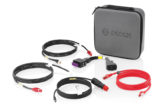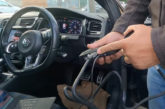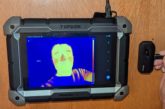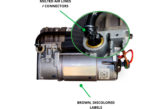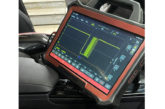
Have you spent valuable time interrogating trouble codes, only to hit a brick wall when determining the true fault? Train4Auto’s Steve Carter relays some examples where a ‘phantom’ fault may be to blame.
Steve Carter is a training specialist who heads up the team at Train4Auto – the sole UK and Ireland training provider for eXponentia, a non-profit training organisation that is backed by top tier aftermarket manufacturers.
 CASE 1 Honda HR-V
CASE 1 Honda HR-V
Our first example is a 2004 Honda HR-V with a 2.0L diesel engine. The customer had brought the car to their local garage because the MIL was showing a fault. The garage did their diagnosis and the trouble code indicated a fault with the Throttle Position Sensor (TPS). They cleared the code, and it immediately came back.
When the garage found out that a replacement TPS was going to cost nearly £500, they hesitated to replace it, as they were aware that choosing to replace the TPS might not actually solve the problem. It was just too expensive to take a gamble on. With no solution to the problem, they asked me to see what I could do.
I repeated all of their steps in diagnosing the fault, and then looked at the TPS signal with an oscilloscope. The scope showed the TPS to have a signal that was as expected, so the wiring was examined for any possible faults. When the wiring was found to be in good order and all of the connections were good, it was time to go a bit deeper.
The sensor was working as designed, the wiring and communications were good, but the fault was still present and triggering the code.
As I was using a scanner that belonged to the garage, I was not entirely familiar with the menus and noticed that with a few presses of some buttons I could recalibrate the TPS. Thinking there was nothing to lose in trying this, I recalibrated the TPS and the fault went away. A test drive and other checks showed that the TPS was working as it should and the car was deemed to be fixed.

CASE 2 BMW 1 Series
The next example was on a 2009 BMW 1 Series equipped with Start/Stop and a manual gearbox. The car had a gearshift neutral sensor fault code and the Start/Stop function was not shutting down the engine when the car was stationary, as it should have.
The first thought was that the fault code was due to the fact that a service was due soon. A check for the usual problems did not show anything amiss. Thinking back to the HR-V, I decided to see if the gearshift neutral sensor could be calibrated. After a bit of searching for the recalibration feature on the scanner, the scanner went to work recalibrating the sensor and the fault was cleared. A test drive showed that the car was running properly and the engine was stopping and starting as expected.
Take note of this problem: given the relatively recent introduction of Start/Stop to cars, it is possible that this particular problem could be likely to occur in this and other makes or models. It is possible that 50,000 miles of driving causes enough bumps and vibrations to confuse the ECU into deciding that the sensor is faulty.

CASE 3 Toyota Prius
The last example also illustrates another problem that can occur, along with a sensor that was fixed by recalibration. A garage was trying to diagnose a running problem with a Toyota Prius. Before you can start to work on a running problem on a Prius, or any other hybrid powered car, you will have to ‘trick’ it into running continuously – known as Mode 1.
Without getting the car into Mode 1, you would never be able to find a vacuum leak, coolant leak, or most running problems. Getting the Prius into this mode requires a precise and specific sequence of braking, gear selection, engine speeds and the use of the ‘Start’ button. With many steps that have to be completed in the ‘proper order’ and within a given time frame, it is not likely that you will be able to accomplish this in the first attempt. After a few tries you will eventually get the Prius into this mode.
A garage was trying to locate a problem that required the engine to run on, and after a few attempts they were successful. Everything was fine as the mechanic went about finding and fixing the problem that the Prius was brought in for. However, he then discovered that there was a fault in the brake pedal sensor.
Now it’s hard to give a customer their car back with a fault still present, but it is extremely difficult when the fault wasn’t there before, so the garage was left to sort out this problem as well. All of the diagnostics showed the fault was in the brake sensor, but that the sensor had a good signal and all of the wiring was in good condition. As you might suspect by now, recalibrating the brake pedal sensor sorted the problem. What had probably happened was that during their attempts to get the sequence right, the brakes were applied with too much enthusiasm, flexing the sensor and creating an abnormal signal.

Have you recalibrated?
While I’m not saying that recalibrating every sensor that has triggered a fault is a viable way to repair cars, once you have eliminated the other possibilities, it is something that should be considered.
Immediately after the sensor is recalibrated, the car should be operated and driven to see if the fault does not return. One of the reasons behind this may be that given the environment in which all of these sensors are subjected to – such as temperature extremes and vibration – a sensor signal or reading outside the expected range can be seen by the ECU and trigger a fault code. This is just another thing that you, as a
skilled mechanic, will have to add to your skills.


